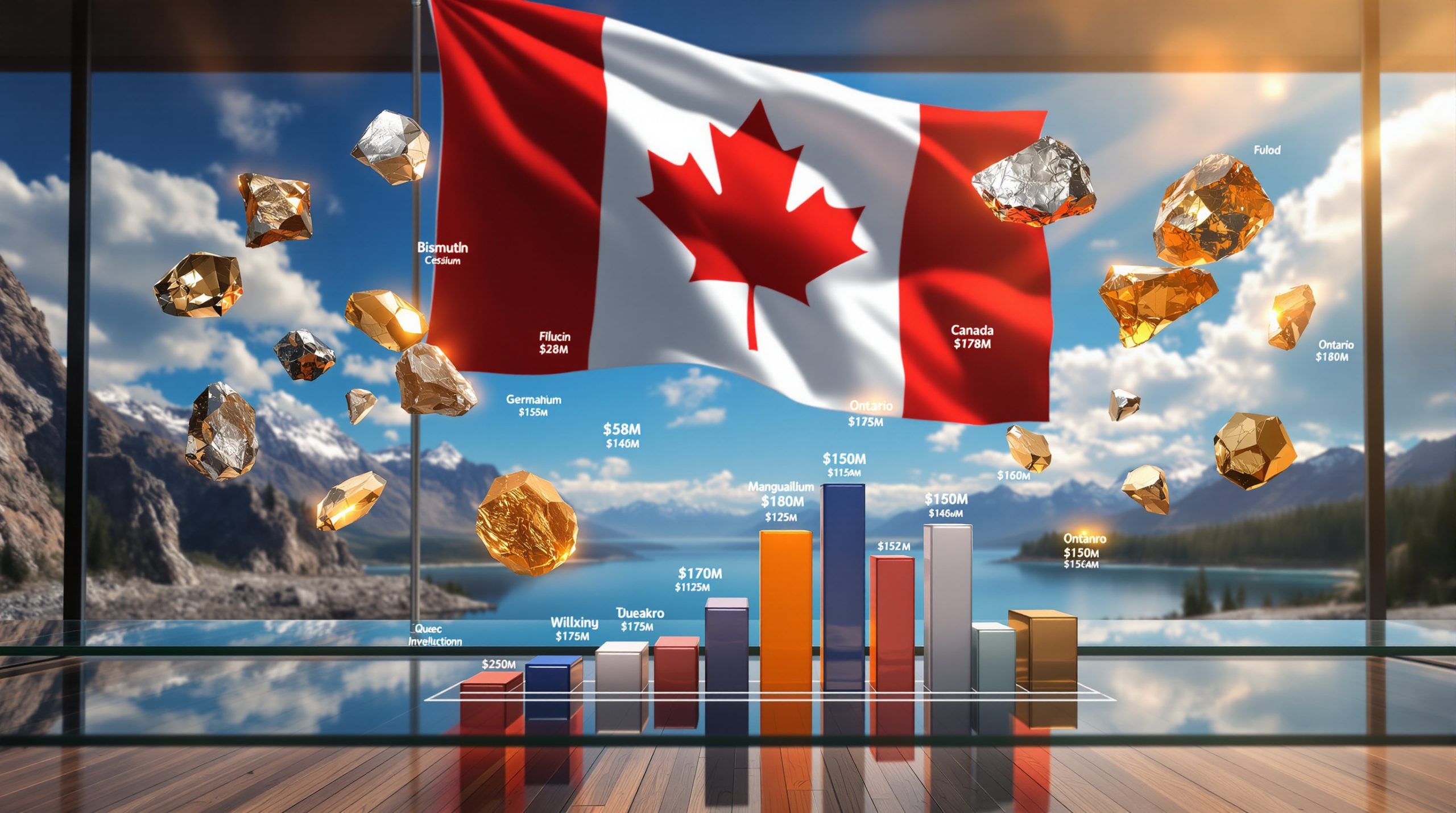Understanding the Copper Tariff Impact on US Businesses and Economy
Inside a New Jersey warehouse, Jay Richman, president of E.W. Berger & Bro, surveys shelves stacked high with copper plumbing fittings and tubing. This stockpiling isn't routine inventory management—it's a defensive strategy against Trump's proposed copper tariffs that threaten to reshape American supply chains.
"We're preparing for the inevitable," explains Richman. "Our suppliers have already increased prices 8-12% just in anticipation of these tariffs, and we're passing those costs directly to customers."
The United States consumed approximately 1.6 million metric tons of refined copper last year, with roughly half imported from major suppliers including Chile, Canada, and Mexico. This dependency leaves American businesses particularly vulnerable to trade policy shifts.
For wholesalers like E.W. Berger & Bro, founded in 1919, the new jersey warehouse filled with copper shows trump tariff risk represents one of the most significant supply chain disruptions in decades. Distributors across the country report similar defensive stockpiling, despite the financial risks of carrying excess inventory during uncertain economic times.
"The irony is that these tariffs, intended to protect American interests, are already hurting American businesses before they're even implemented," notes Sam Desai, operations director at RM-Metals, who reports sales slowing by 18% as customers resist higher prices.
The Economic Ripple Effects of Potential Copper Tariffs
Copper prices on New York's Comex exchange reached an all-time high in March 2025, with prices approximately 14% higher this year compared to 2024. Market analysts attribute this surge directly to tariff speculation, creating what commodities expert Bart Melek of TD Securities calls "a premium of fear."
Currently, Comex copper carries more than a $700-a-ton premium over London Metal Exchange contracts—an unprecedented divergence that signals severe market distortion. This price disconnect has triggered what analysts term a "two-tier" global copper market dynamics.
"American consumers are essentially paying a tariff before the tariff even exists," explains Ewa Manthey, commodities strategist at ING Bank NV. "This premium represents the market pricing in supply disruption risk."
The Federal Reserve has warned in internal communications that copper tariffs could contribute significantly to inflationary pressures, potentially adding 0.3-0.5% to annual inflation rates. This comes at a particularly sensitive time as the economy struggles to maintain price stability.
Hedge funds have increased their long positions in copper futures by 22% in Q1 2025, betting on continued price escalation. Meanwhile, Chile—America's largest copper supplier—has begun discussions about potential retaliatory measures, including export quotas that could further constrict supply.
Why Is Copper So Critical to the US Economy?
Known as "Doctor Copper" due to its uncanny ability to predict economic trends, copper serves as a barometer of economic health. This nickname stems from copper's pervasive use across virtually every sector of the economy.
"No other metal touches as many industries simultaneously," explains metallurgist Dr. Elena Rodriguez of MIT's Materials Research Laboratory. "Its electrical and thermal conductivity—97% efficiency compared to just 61% for aluminum—makes it effectively irreplaceable in many applications."
Approximately 40% of U.S. copper consumption goes to construction, with another 30% dedicated to electronics manufacturing. The metal is used extensively in automobiles (particularly electric vehicles which use 183 pounds of copper versus 49 pounds in conventional vehicles), data centers, home construction, and consumer electronics.
Domestic production comes primarily from large-scale open-pit mines in southwestern states including Arizona and Utah, operated by major producers like Freeport-McMoRan Inc. and Rio Tinto's copper strategy. However, this production satisfies only about 50% of domestic demand, with the shortfall covered by imports.
"The recycling component is often overlooked," notes copper industry analyst Michael Chang. "Approximately 35% of U.S. copper supply comes from recycled scrap, creating a circular economy that actually reduces import dependency."
Microsoft's new Arizona data center facility required over 2,000 tons of copper for its cooling systems alone, highlighting the metal's critical role in America's digital infrastructure expansion.
Timeline of Trump's Copper Tariff Proposals
The copper market's volatility can be traced to a specific sequence of events that have unfolded in 2025:
Late January 2025: During a campaign rally in Michigan, Trump first mentioned copper tariffs as part of a broader "economic security" platform, catching markets by surprise.
February 25, 2025: Trump formally ordered officials to consider trade measures on copper under Section 232 of the Trade Expansion Act, citing national security concerns.
Days later: In a subsequent press conference, Trump suggested copper imports could face a 25% tariff, sending futures markets into immediate volatility.
April 2025: Implementation has been indicated to be weeks away, pending final review by the United States Trade Representative.
The timeline mirrors the process used for steel and aluminum tariffs in 2018, though industry analysts note the copper supply chain is considerably more complex and globally integrated.
The Copper Development Association has intensified lobbying efforts, commissioning economic impact studies showing potential job losses in copper-consuming industries could outweigh gains in mining sectors by a ratio of 16:1.
How Would Tariffs Impact Specific Industries?
Automotive Sector
According to analysis from Bloomberg Intelligence, a 25% copper import tariff would add between $68 to $275 in incremental raw material costs per vehicle, depending on model and powertrain type.
Electric vehicles would be particularly affected, containing four times more copper content than conventional vehicles—primarily in battery systems, motors, and charging infrastructure. Tesla's Gigafactory Texas has reported projections of $12 million in additional monthly copper expenses should tariffs be implemented.
"Automakers are caught in a perfect storm," explains automotive analyst Jennifer Morris. "EV mandates require more copper per vehicle precisely when copper is becoming more expensive and copper supply chain challenges are increasing."
Ford's most recent earnings call specifically cited copper costs as a "material headwind" for profitability in coming quarters, with little ability to substitute alternative materials without compromising performance.
Technology and Data Centers
The explosive growth of artificial intelligence computing facilities has accelerated procurement of copper components, creating what Tony Qorri of DataBank describes as "unprecedented demand pressure."
"Any trade uncertainty will inevitably cloud the outlook of AI development in the US," warns Qorri, whose company is locking in contracts for copper cable, wiring, pipes, and fittings earlier than planned.
Google's Nevada data center has already shifted 80% of its copper sourcing to domestic suppliers, though at a 15% cost premium compared to international sources. This reshoring trend is expected to accelerate across the tech sector.
The semiconductor industry, already grappling with supply chain disruptions, uses copper extensively in chip manufacturing. A report from the Semiconductor Industry Association estimates tariffs could delay domestic chip production expansion by 6-12 months.
Expert Opinions on Tariff Consequences
Economic experts across the political spectrum have voiced concerns about the potential effects of copper tariffs:
Ewa Manthey, commodities strategist at ING Bank NV, warns: "Tariffs will make US copper more costly for consumers while doing little to increase domestic production capacity, which takes years to develop."
Bart Melek of TD Securities offers a stark assessment: "Consumers will consume less stuff with copper in it. It's basic economics—higher input costs mean either reduced margins or reduced demand."
Tony Qorri, infrastructure director at DataBank, highlights technology implications: "Any trade uncertainty will inevitably cloud the outlook of AI development in the US at precisely the moment when this competitive advantage is most crucial."
Even copper industry executives express mixed opinions. Richard Adams, CEO of a mid-sized Arizona copper mining operation, acknowledges: "Short-term, tariffs might boost our margins, but long-term, if they reduce overall copper consumption or trigger retaliatory measures, we could all lose."
Former Treasury economist Martin Chen offers a counterpoint: "Domestic production security for critical minerals may justify short-term economic disruption, particularly given increasing nationalization discussions in copper-rich countries like Chile."
How Are Businesses Responding to Tariff Uncertainty?
American businesses across the supply chain are implementing diverse strategies to navigate copper tariff uncertainty:
Wholesalers like E.W. Berger & Bro are stockpiling inventory despite risks of an economic downturn, with U.S. warehouse data showing copper inventories up 25% year-over-year in Q1 2025.
Manufacturers have accelerated adoption of hedging strategies, with approximately 60% now utilizing futures contracts to lock in pricing—up from just 35% in 2024.
Distributors like RM-Metals report significantly slower sales cycles as customers resist higher prices and delay non-essential purchases. "Our sales cycle has stretched by about 20%," reports Sam Desai. "Customers want multiple quotes and take longer to commit."
Pricing strategies have evolved, with most businesses passing increased costs to customers. However, competitive pressures are creating strategic exceptions, with some distributors offering price protection only to their most loyal customers.
"We're seeing companies split their strategies," explains supply chain consultant Rebecca Willis. "Critical components get stockpiled while non-essentials are quoted with variable pricing based on tariff implementation dates."
Plumbing contractors in New Jersey report requiring deposits from homeowners for copper-intensive projects—a practice previously unnecessary in the industry—to hedge against price volatility during project timelines.
What Does This Mean for Consumers?
The ultimate impact of copper tariffs will inevitably reach American consumers through multiple channels:
Higher prices for products containing copper components are already appearing, with refrigerators and HVAC systems projected to increase 6-8% in retail price.
Economic analyses suggest the new jersey warehouse filled with copper shows trump tariff risk could add approximately $150 annually to average household expenses through direct and indirect price increases.
Consumer confidence metrics have shown sensitivity to tariff discussions, with University of Michigan surveys indicating reduced purchasing intentions for major appliances and home improvement projects.
"The consumer is the one who's losing," says Jay Richman of E.W. Berger & Bro. "When materials cost more, construction costs more, appliances cost more—all for the same end product."
Housing affordability, already stretched in many markets, faces additional pressure as copper represents approximately 4.5% of new home construction material costs.
The timing is particularly challenging for consumers, with tariff-driven price increases potentially coinciding with seasonal summer demand spikes for air conditioning equipment and installation.
FAQs About Copper Tariffs and Economic Impact
How much copper does the US import annually?
Approximately 800,000 metric tons of refined copper, representing about half of the 1.6 million metric tons consumed annually. This import dependency has increased 12% over the past decade as domestic consumption has outpaced mining expansion.
Which countries would be most affected by US copper tariffs?
Chile, Canada, and Mexico, which are the biggest foreign suppliers of copper to the United States. Chile alone accounts for approximately 35% of U.S. copper imports, creating particular vulnerability to potential retaliatory measures.
How have copper prices already responded to tariff discussions?
Copper prices on the Comex reached an all-time high in March 2025 and remain about 14% higher this year, with a $700-per-ton premium over London Metal Exchange contracts. This divergence between American and global prices creates competitive disadvantages for U.S. manufacturers.
What industries would face the greatest impact from copper tariffs?
Automotive manufacturing (especially EVs), data centers supporting AI development, construction, and consumer electronics would be most significantly affected. Renewable energy projects could see cost increases of 10-15% due to copper-intensive solar farm wiring and wind turbine components.
Could tariffs actually increase domestic copper production?
Industry analysts suggest meaningful production increases would require 5-7 years of mine development, even with expedited permitting. The U.S. currently has just two copper smelters operating, compared to China's 25, creating a processing bottleneck that limits how quickly domestic production can expand.
How might other countries respond to US copper tariffs?
Major copper exporters like Chile have indicated potential retaliatory measures, including export quotas or preferential pricing for non-US buyers. Looking ahead to the 2025 copper market outlook, companies like BHP's copper growth strategy will be particularly important as the International Copper Study Group has warned of potential supply chain fragmentation that could undermine global market efficiency.
Ready to Spot the Next Major Copper Discovery?
Stay ahead of the market with real-time alerts on significant ASX copper discoveries using Discovery Alert's proprietary Discovery IQ model, which transforms complex mining data into actionable investment insights. Explore why major mineral discoveries can lead to substantial returns by visiting our dedicated discoveries page and begin your 30-day free trial today.




